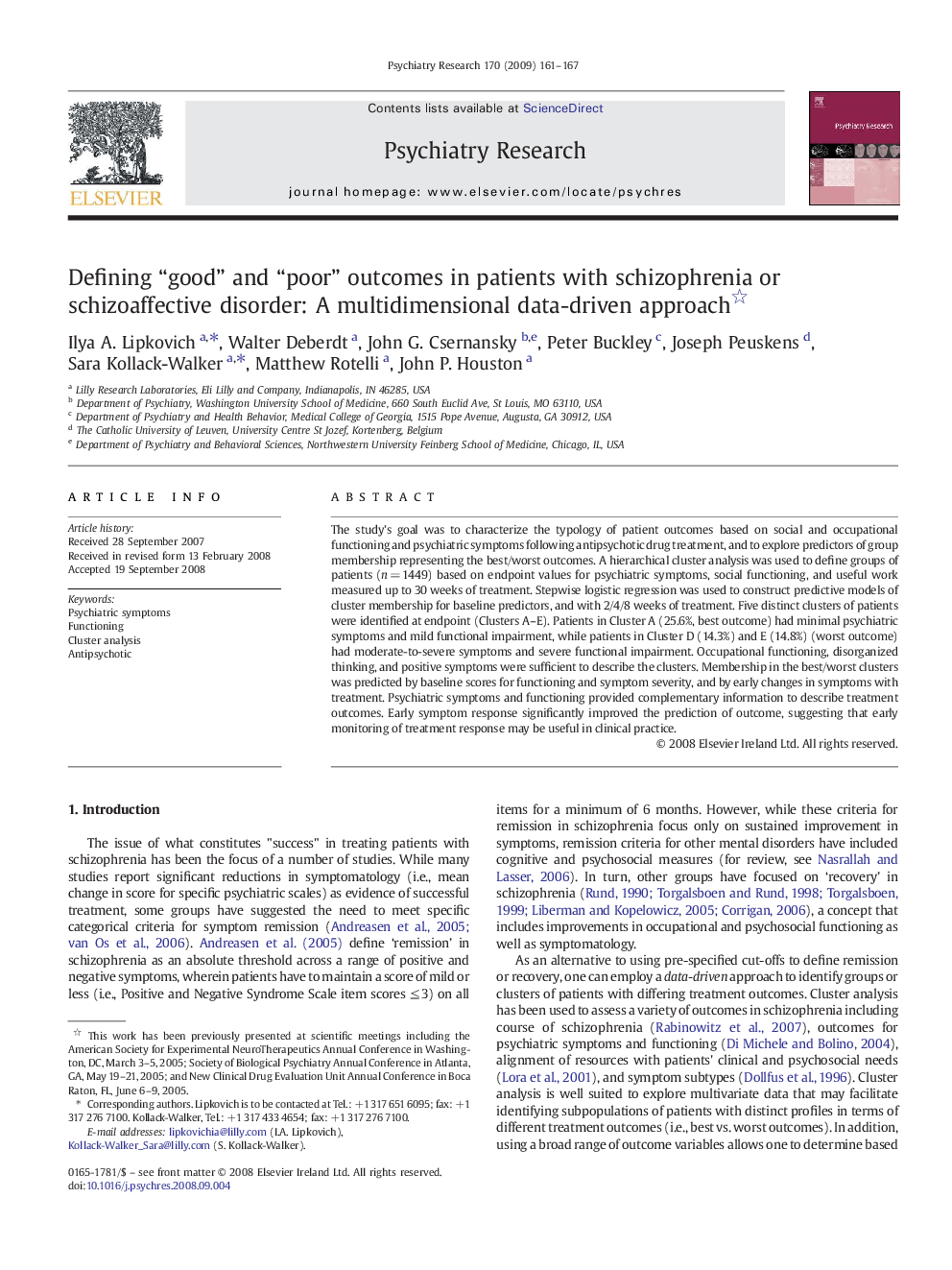| کد مقاله | کد نشریه | سال انتشار | مقاله انگلیسی | نسخه تمام متن |
|---|---|---|---|---|
| 332785 | 545757 | 2009 | 7 صفحه PDF | دانلود رایگان |

The study's goal was to characterize the typology of patient outcomes based on social and occupational functioning and psychiatric symptoms following antipsychotic drug treatment, and to explore predictors of group membership representing the best/worst outcomes. A hierarchical cluster analysis was used to define groups of patients (n = 1449) based on endpoint values for psychiatric symptoms, social functioning, and useful work measured up to 30 weeks of treatment. Stepwise logistic regression was used to construct predictive models of cluster membership for baseline predictors, and with 2/4/8 weeks of treatment. Five distinct clusters of patients were identified at endpoint (Clusters A–E). Patients in Cluster A (25.6%, best outcome) had minimal psychiatric symptoms and mild functional impairment, while patients in Cluster D (14.3%) and E (14.8%) (worst outcome) had moderate-to-severe symptoms and severe functional impairment. Occupational functioning, disorganized thinking, and positive symptoms were sufficient to describe the clusters. Membership in the best/worst clusters was predicted by baseline scores for functioning and symptom severity, and by early changes in symptoms with treatment. Psychiatric symptoms and functioning provided complementary information to describe treatment outcomes. Early symptom response significantly improved the prediction of outcome, suggesting that early monitoring of treatment response may be useful in clinical practice.
Journal: Psychiatry Research - Volume 170, Issues 2–3, 30 December 2009, Pages 161–167